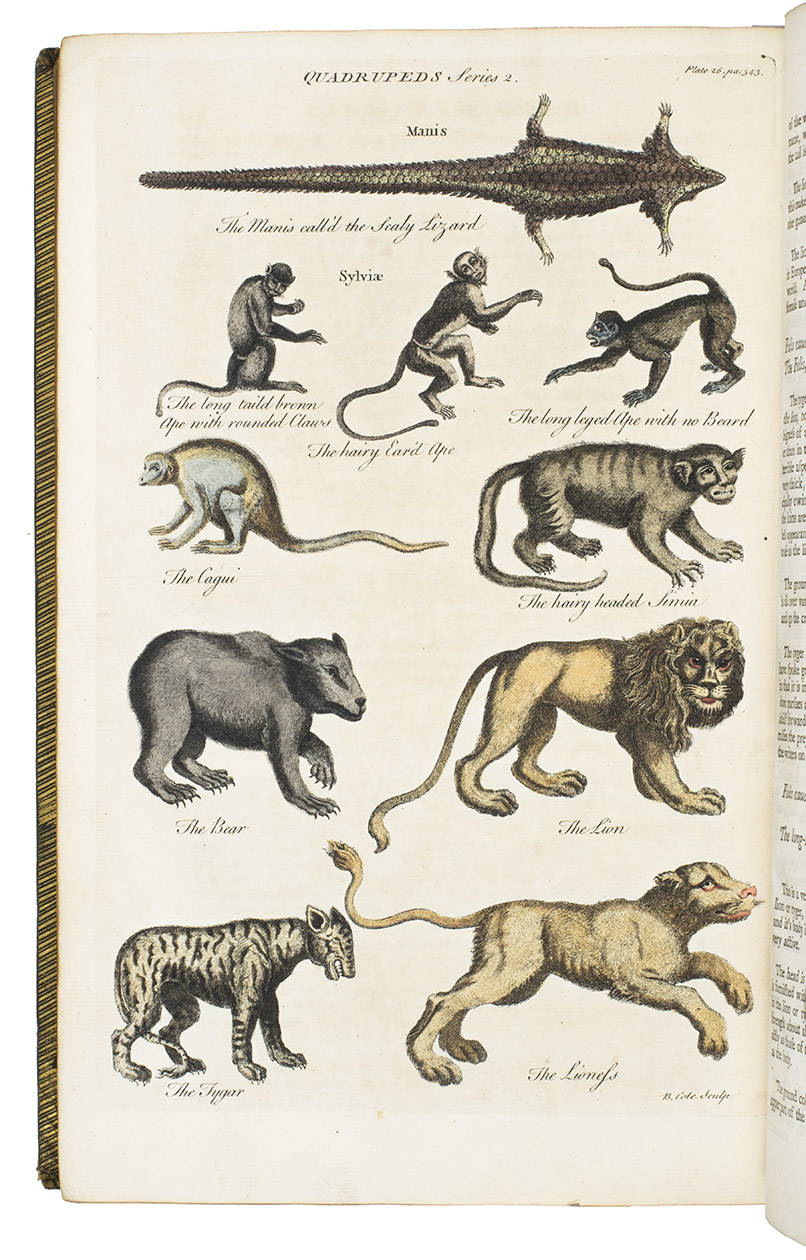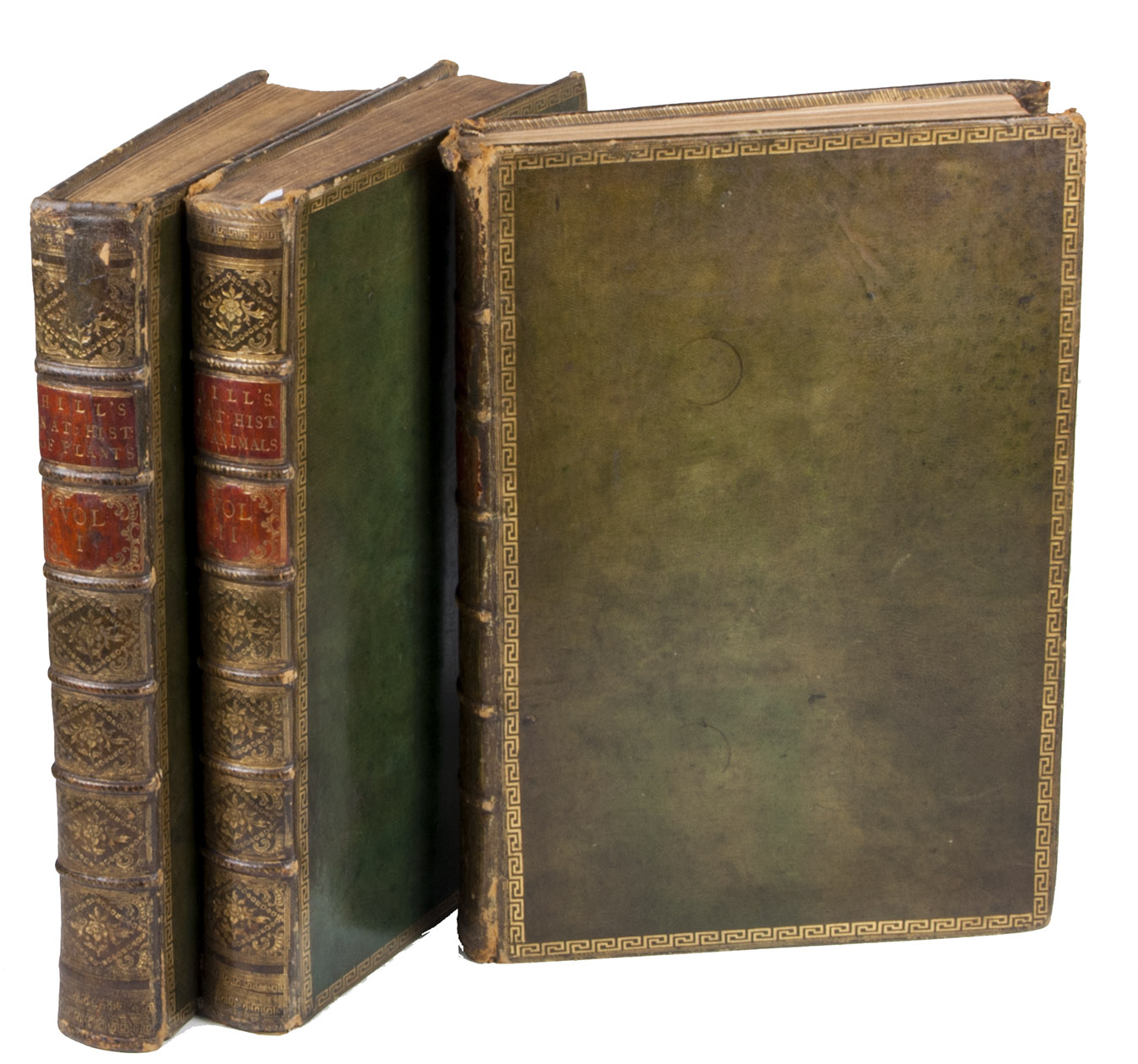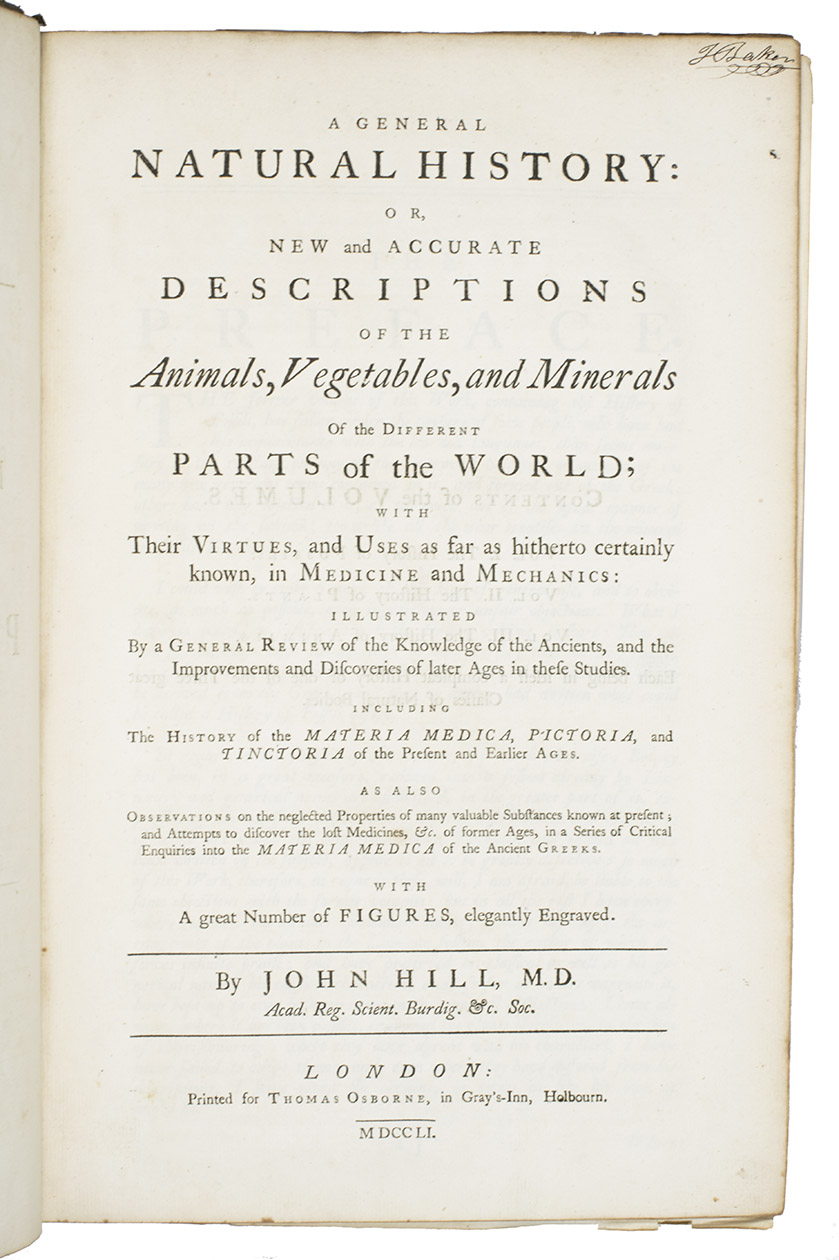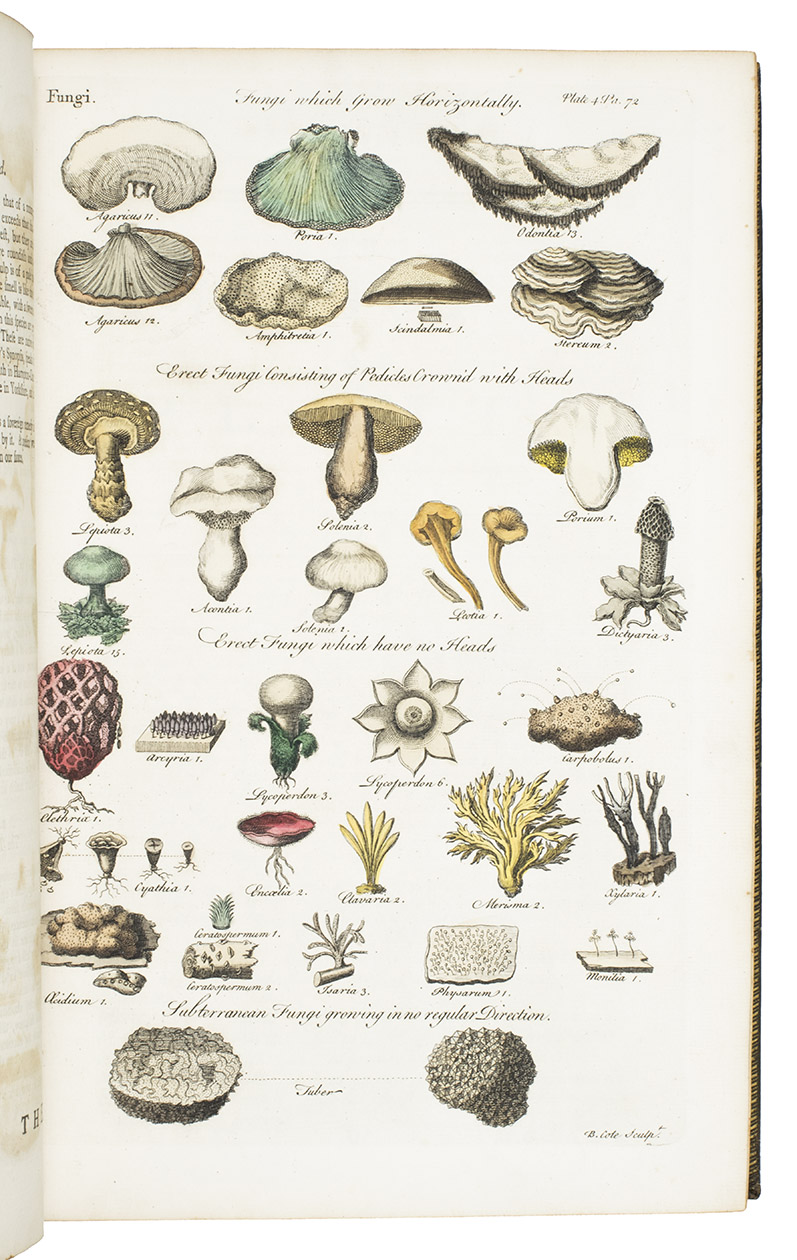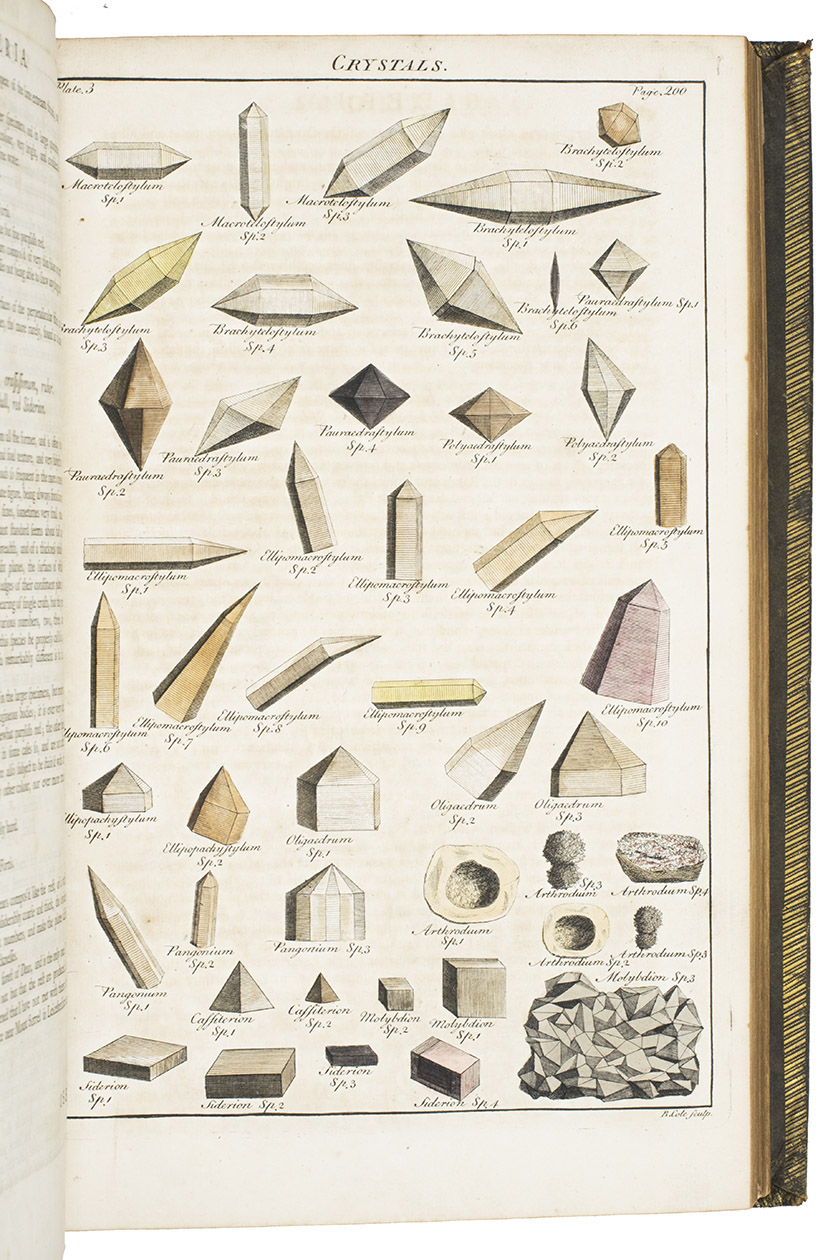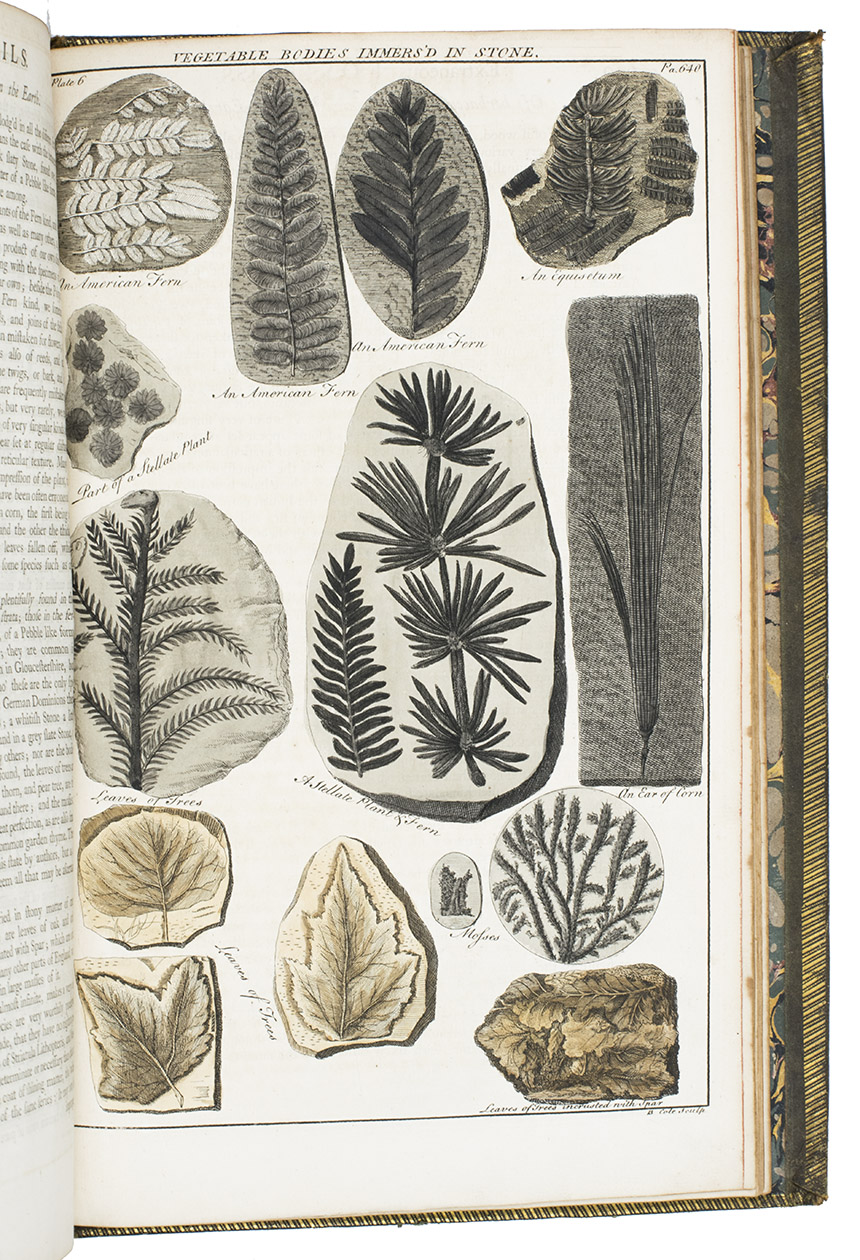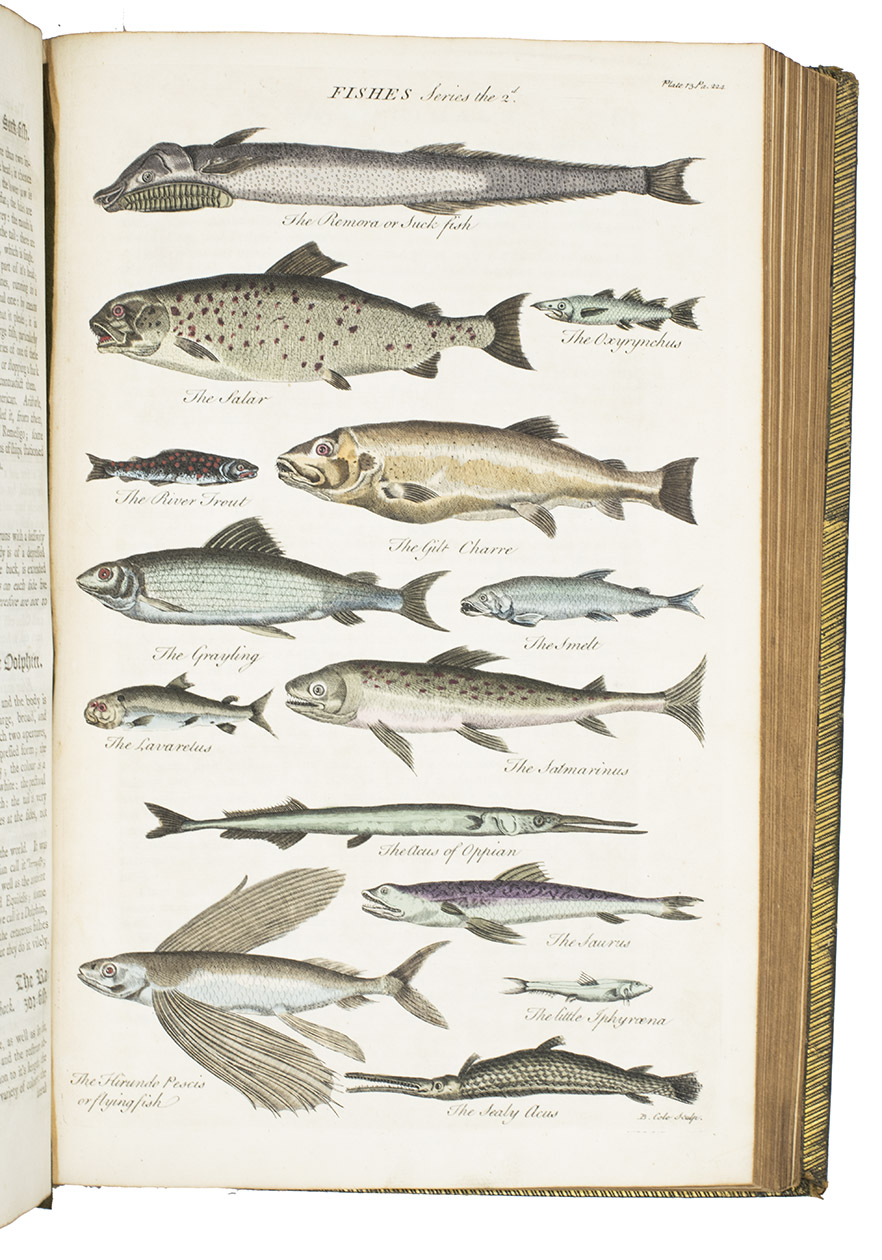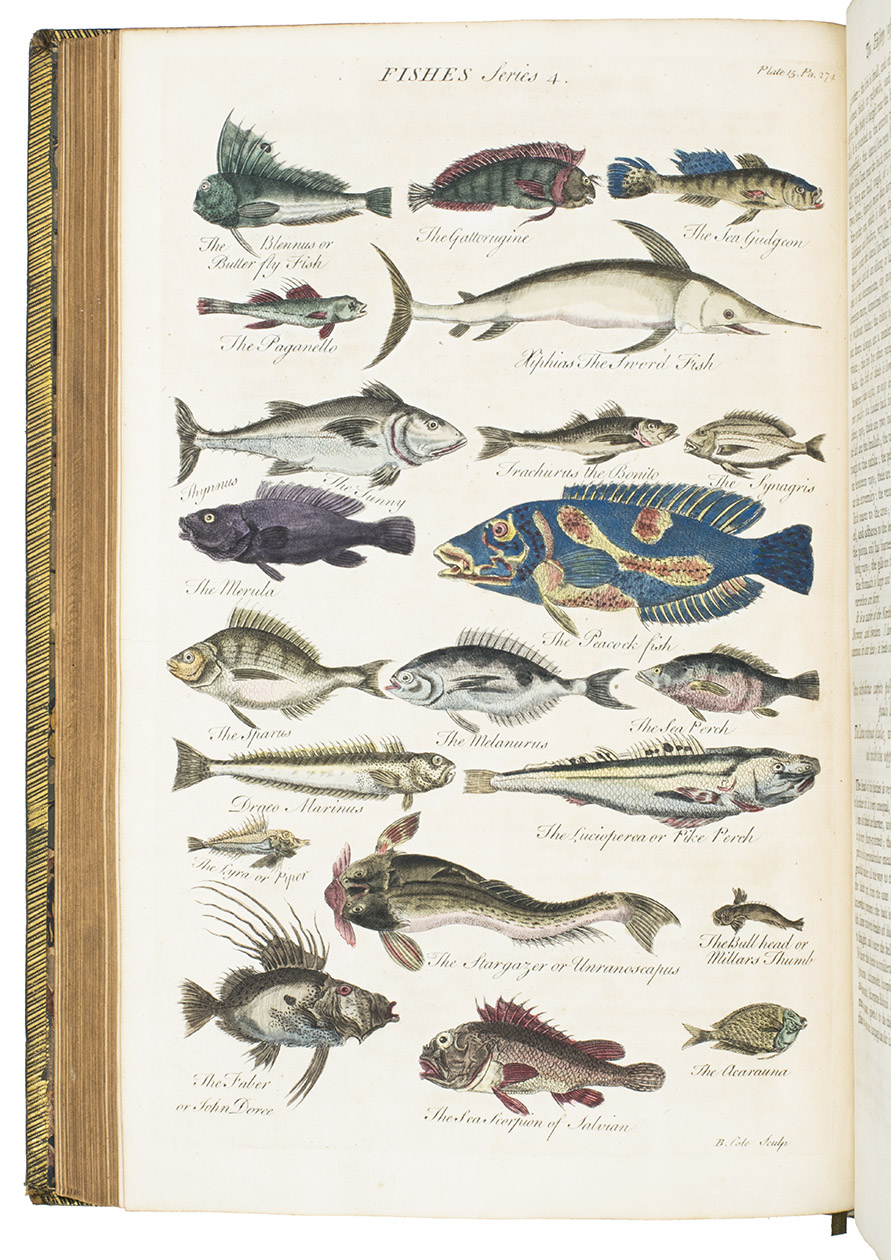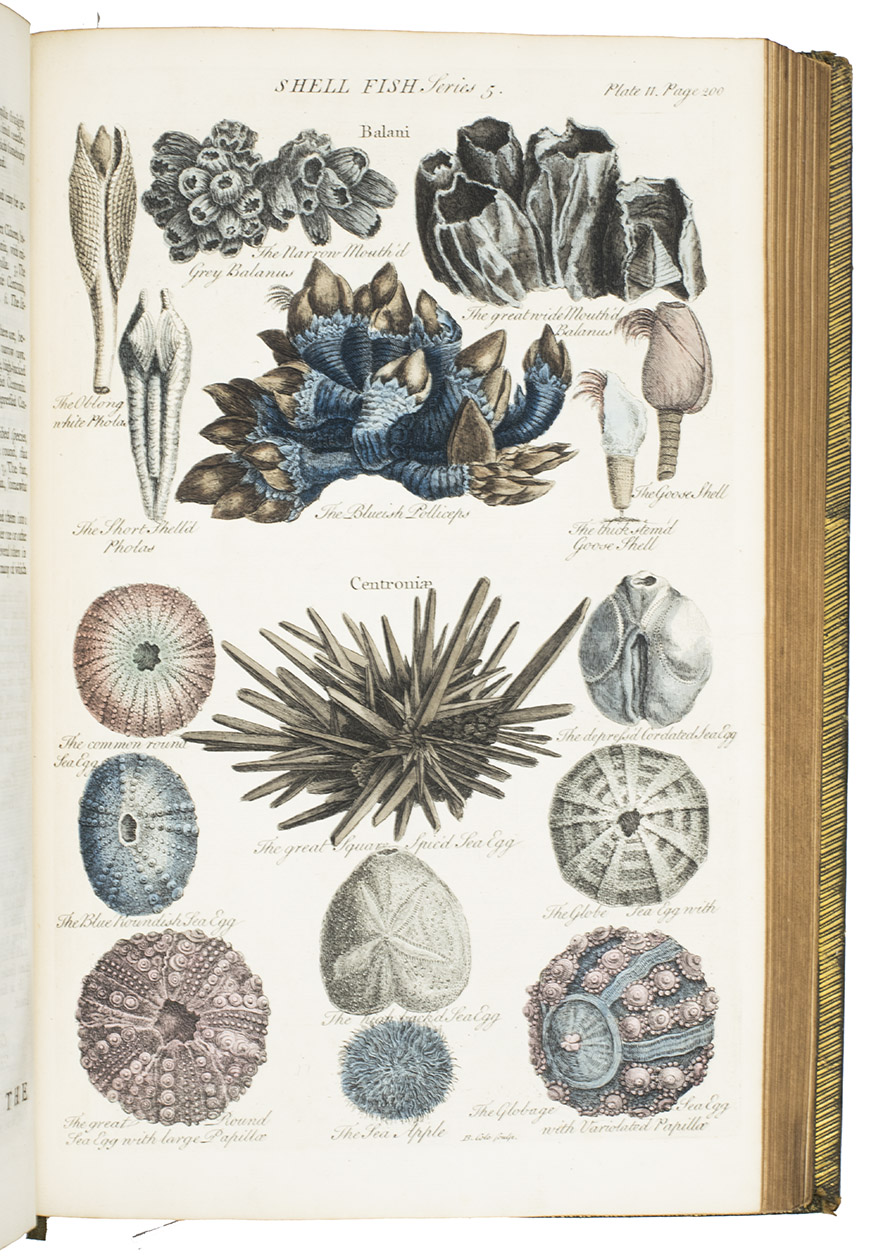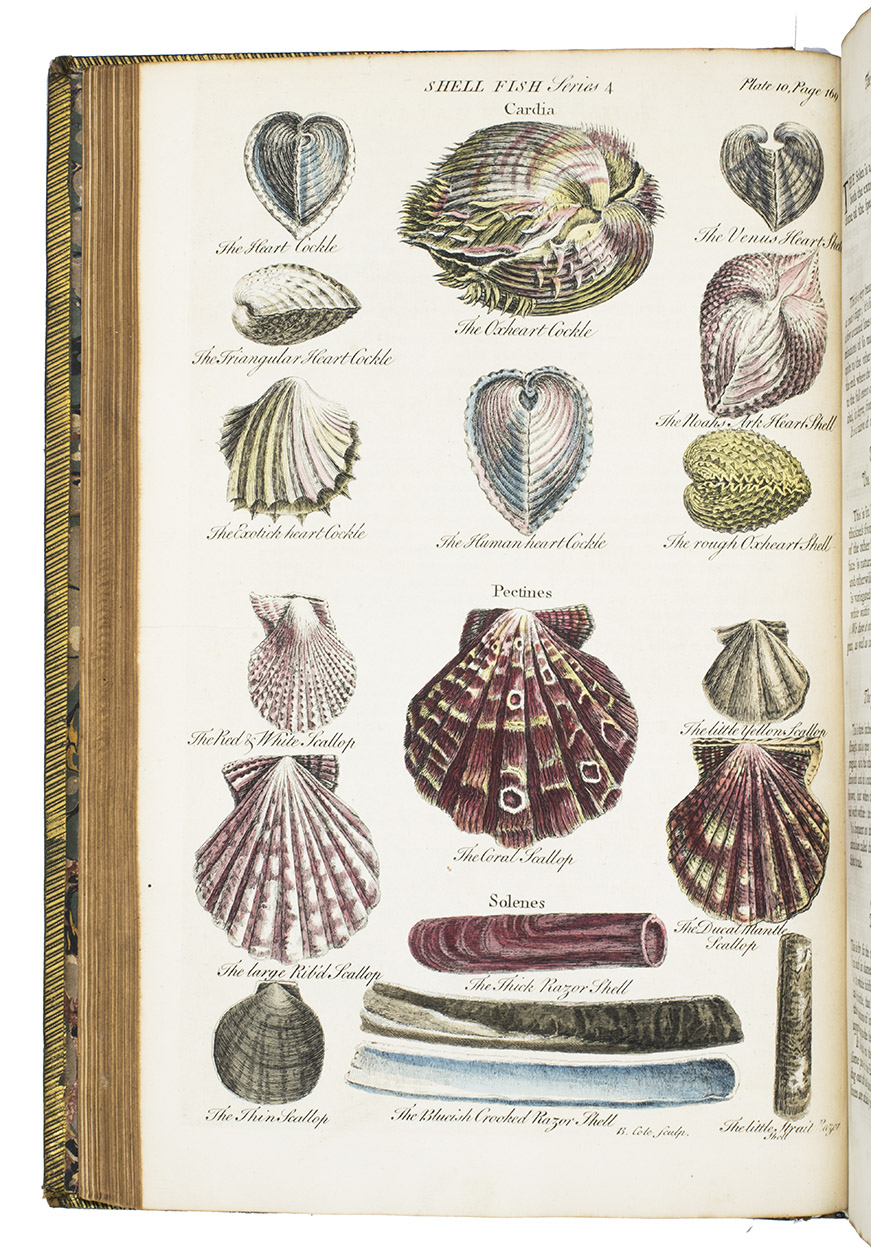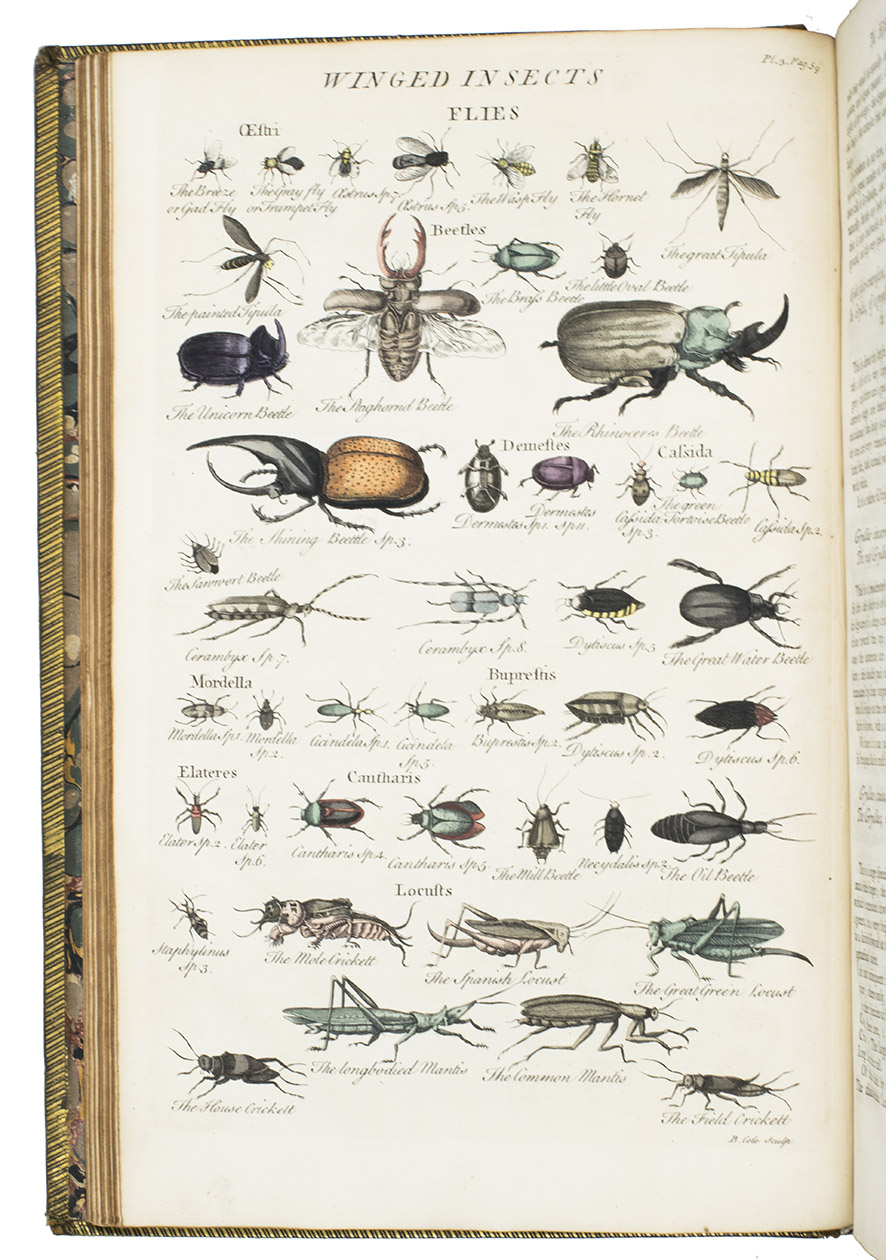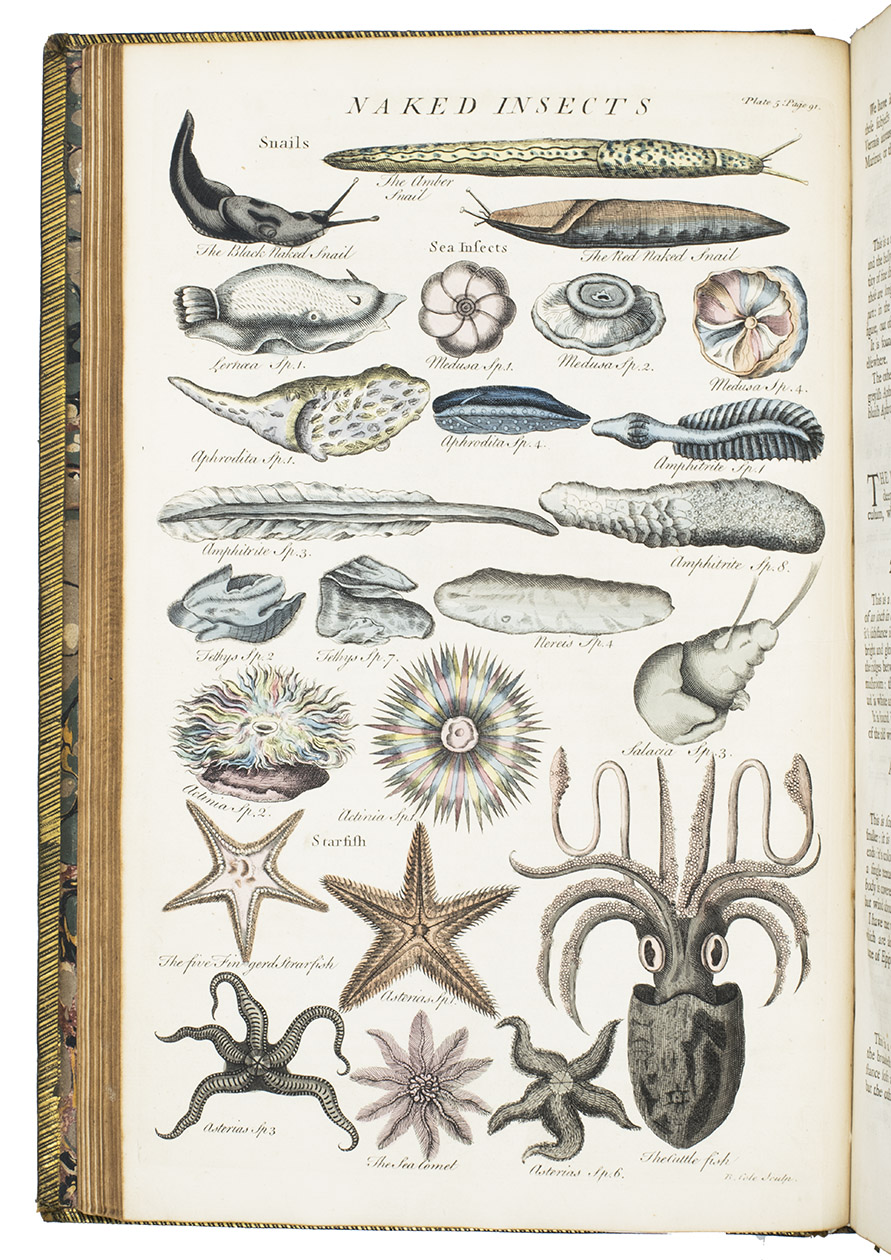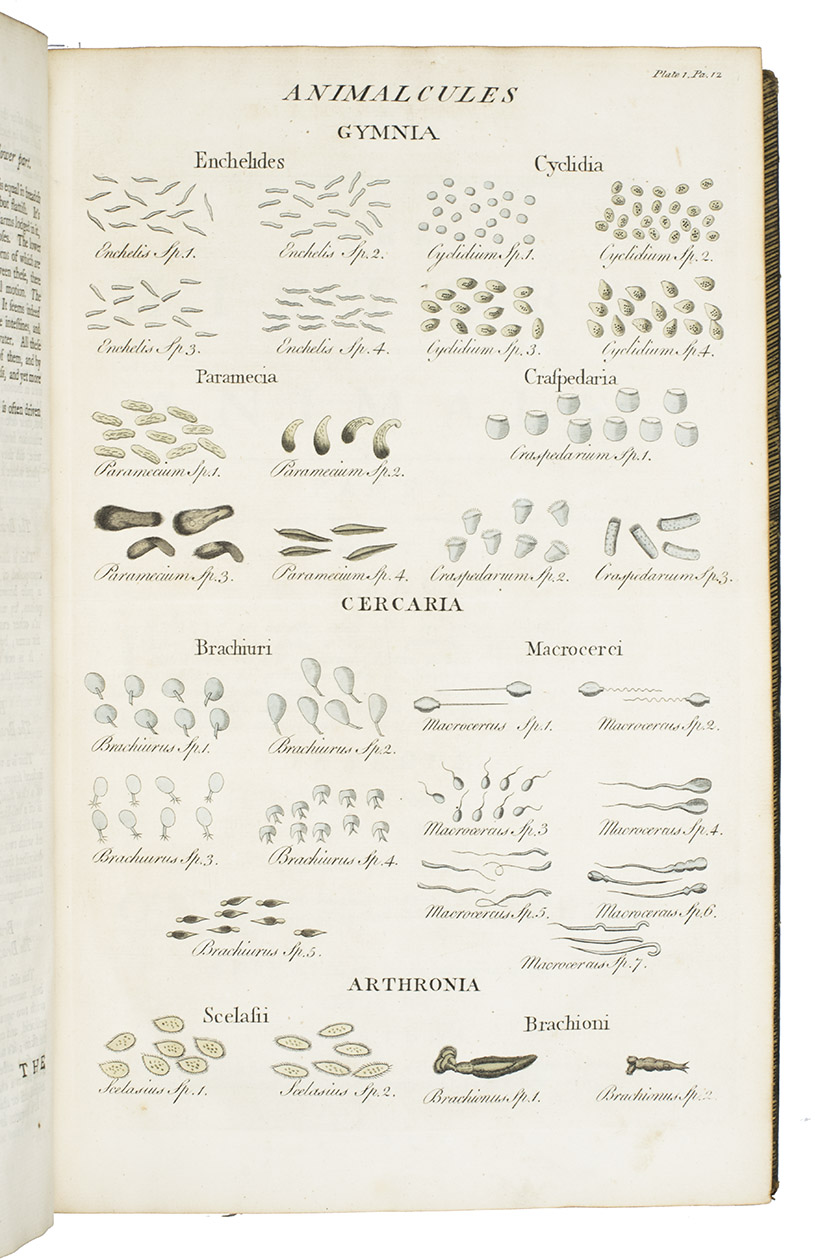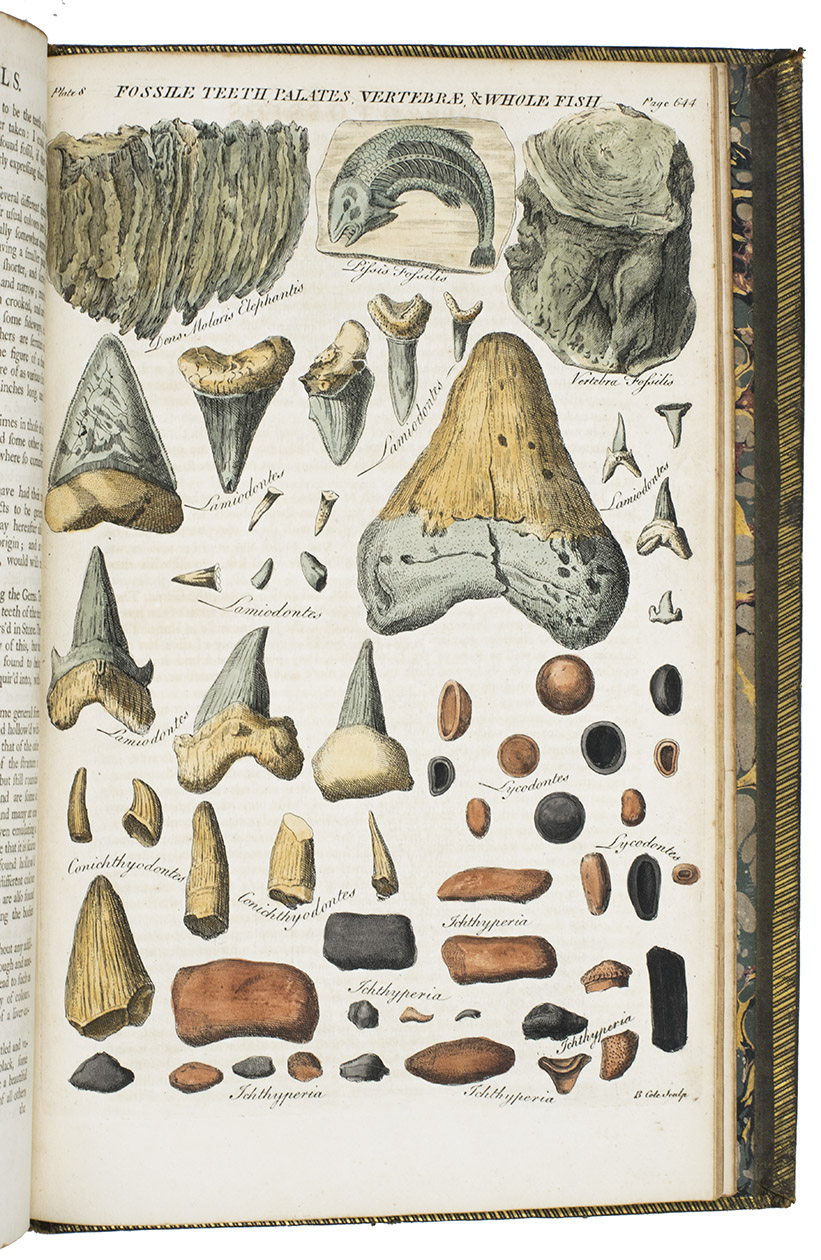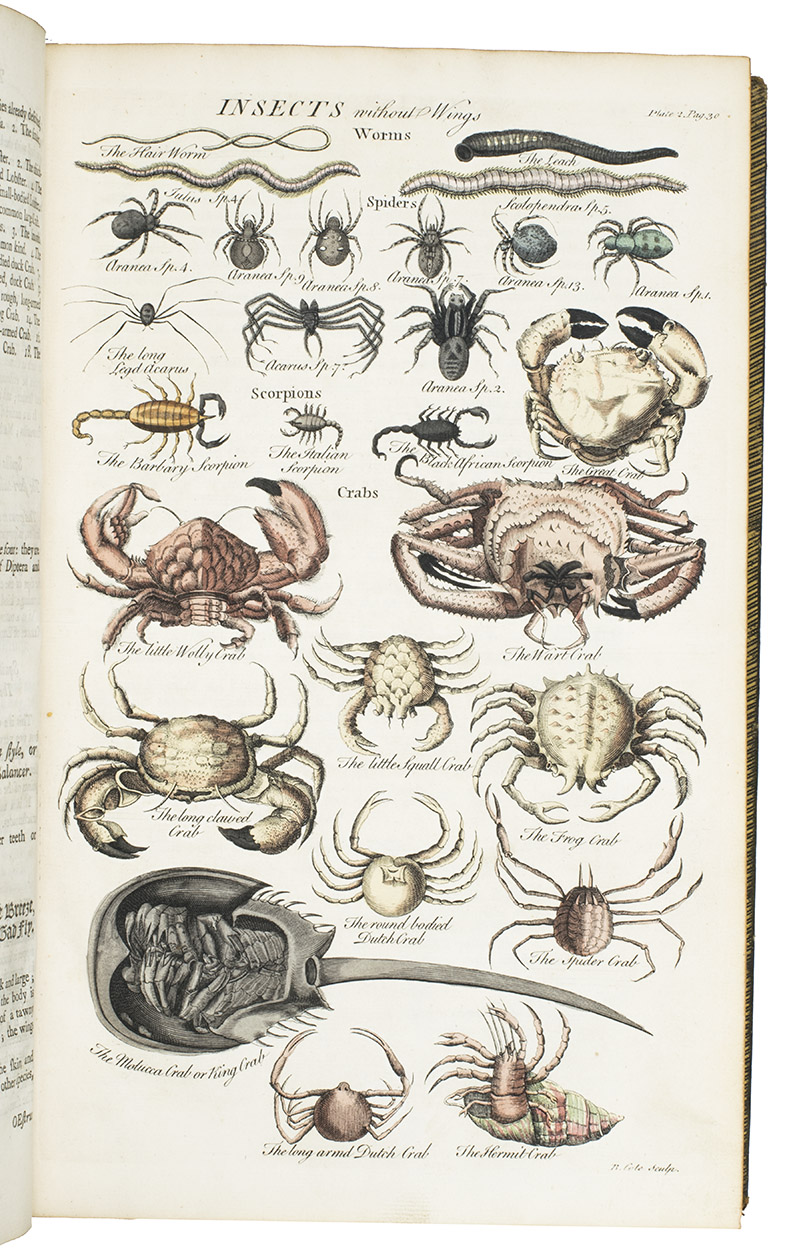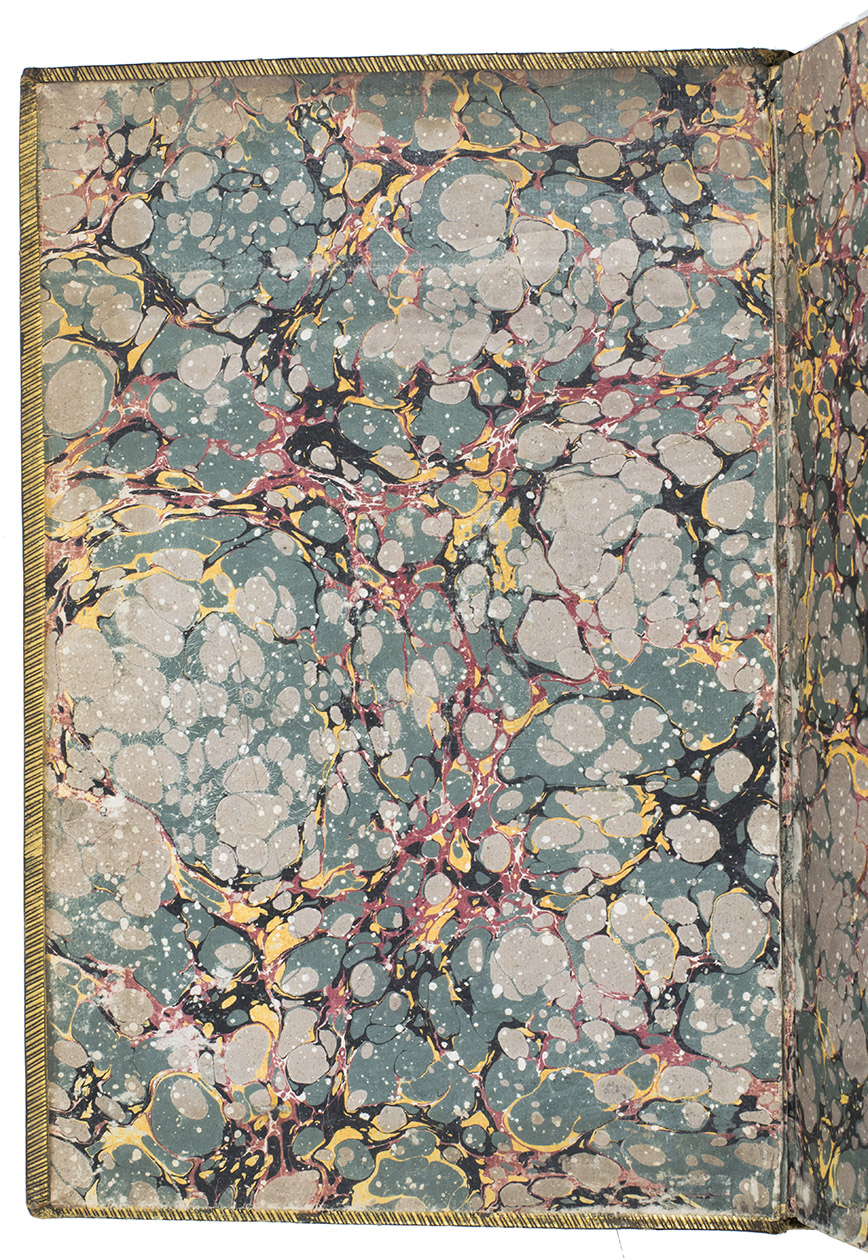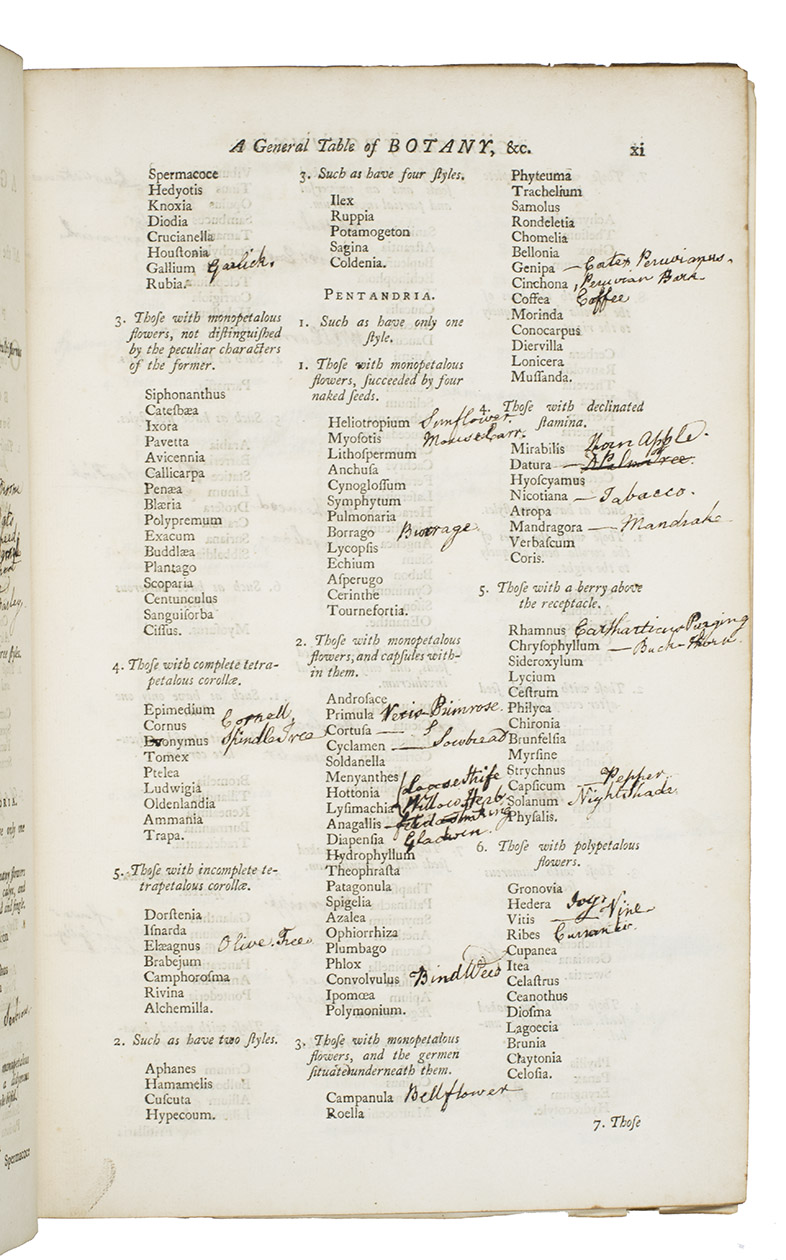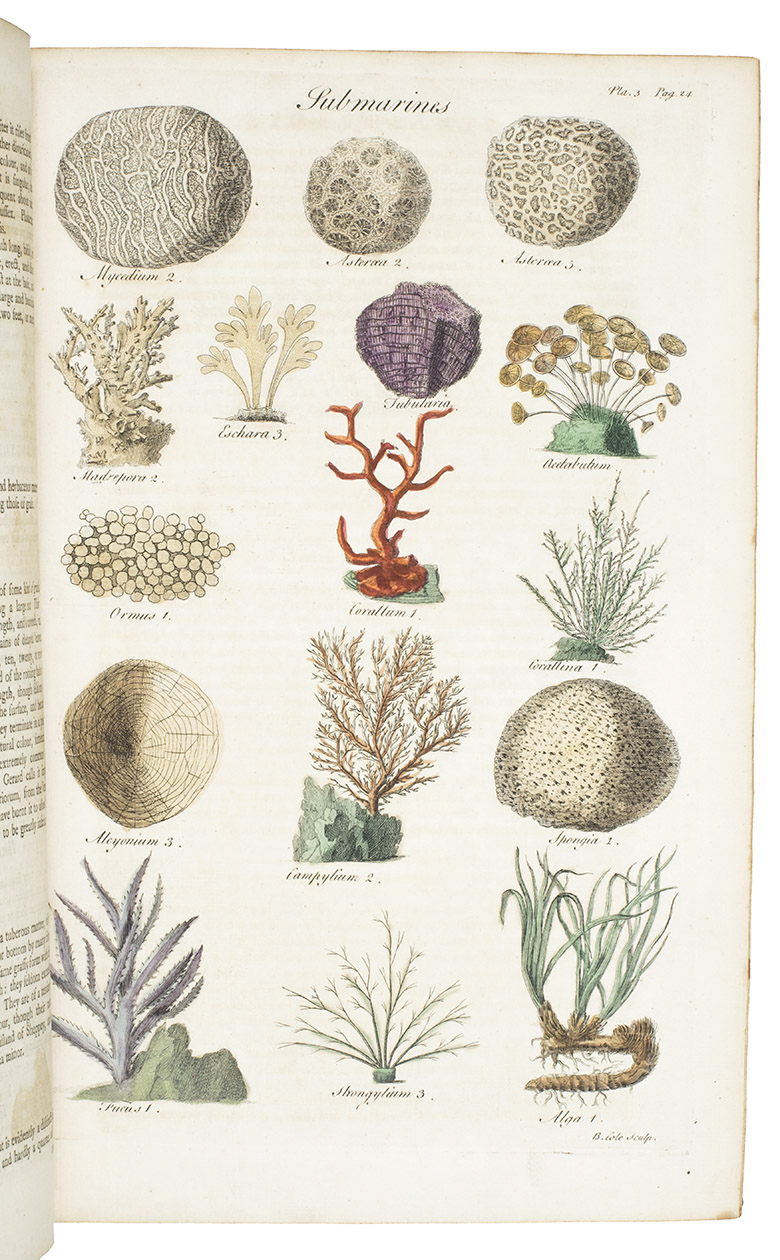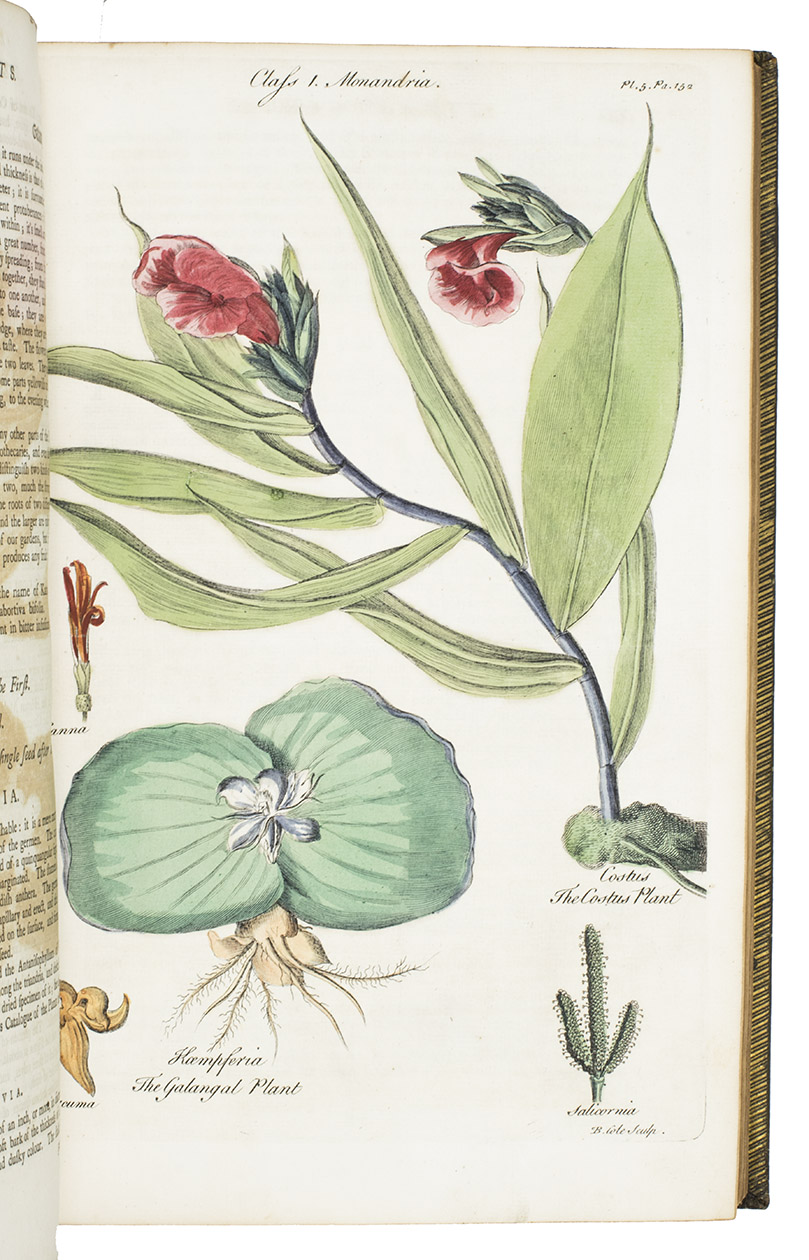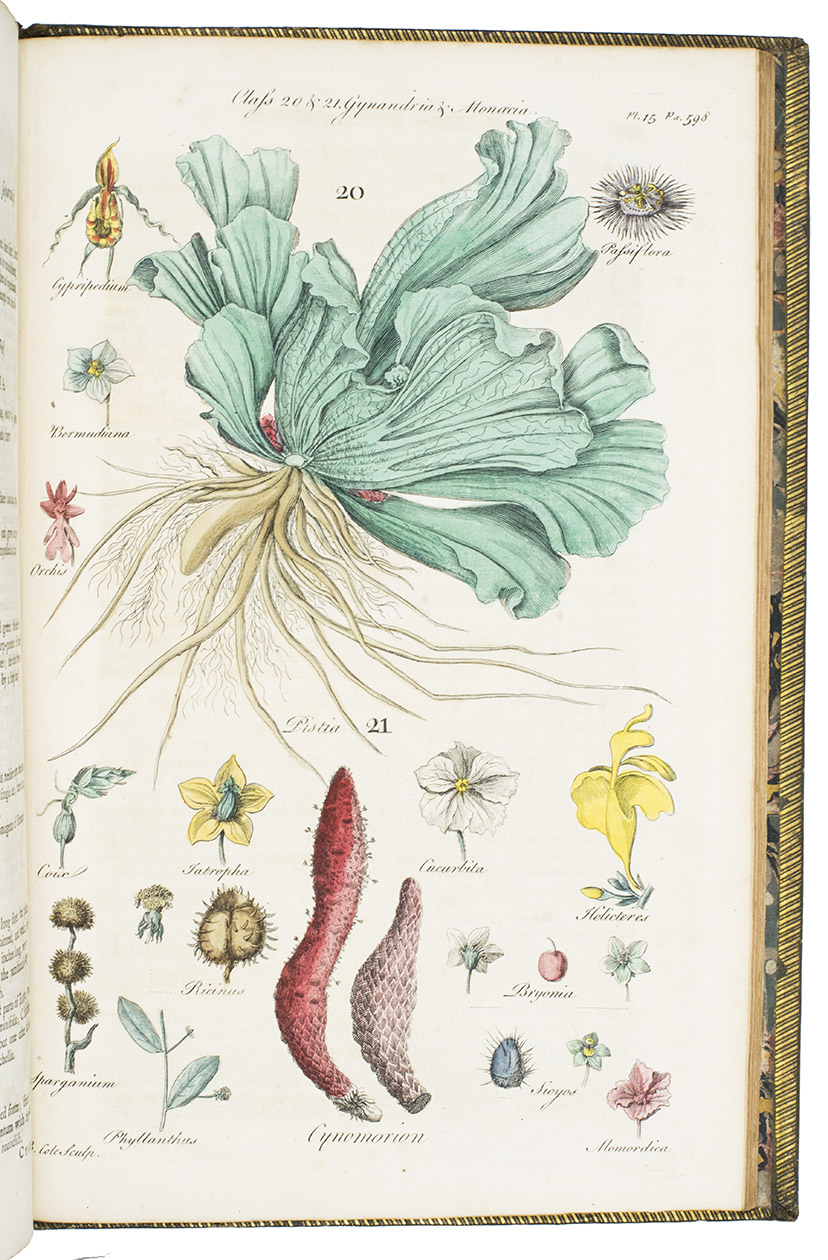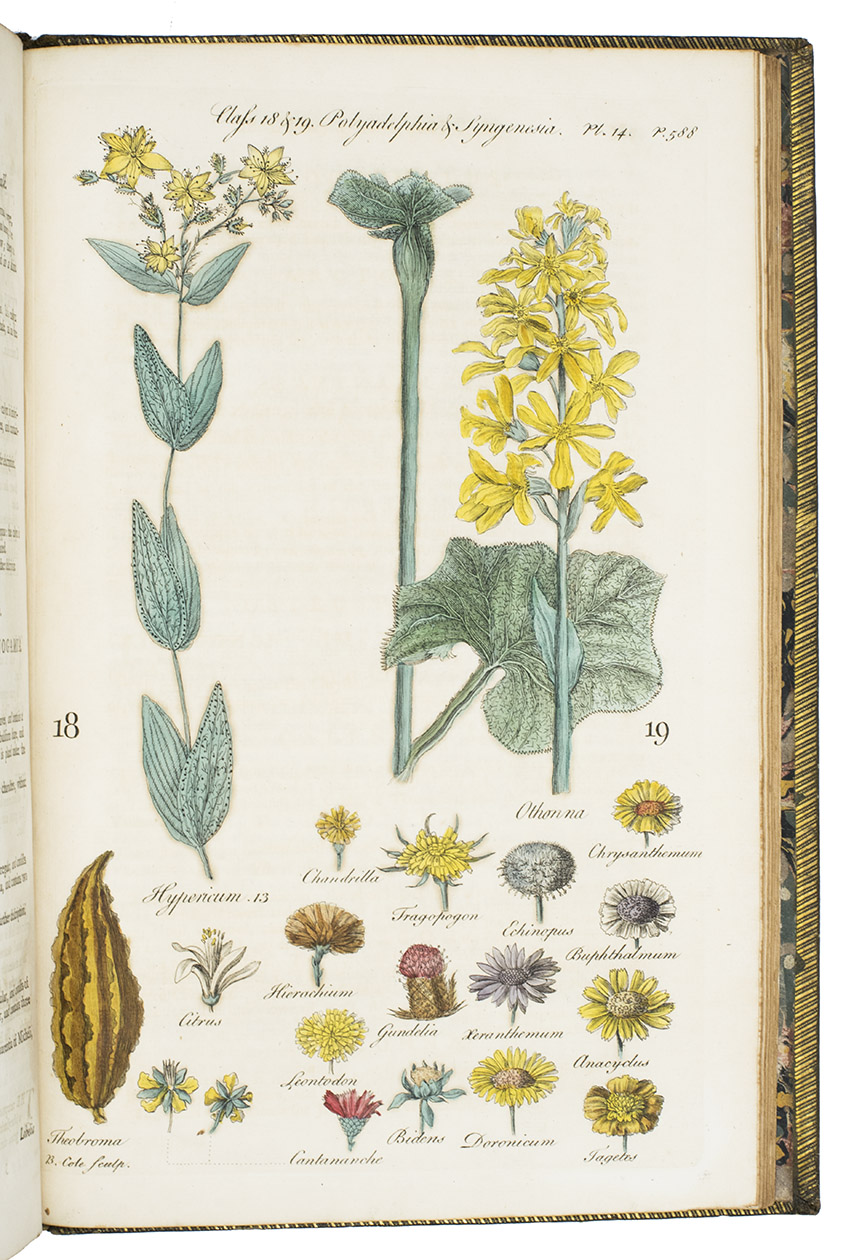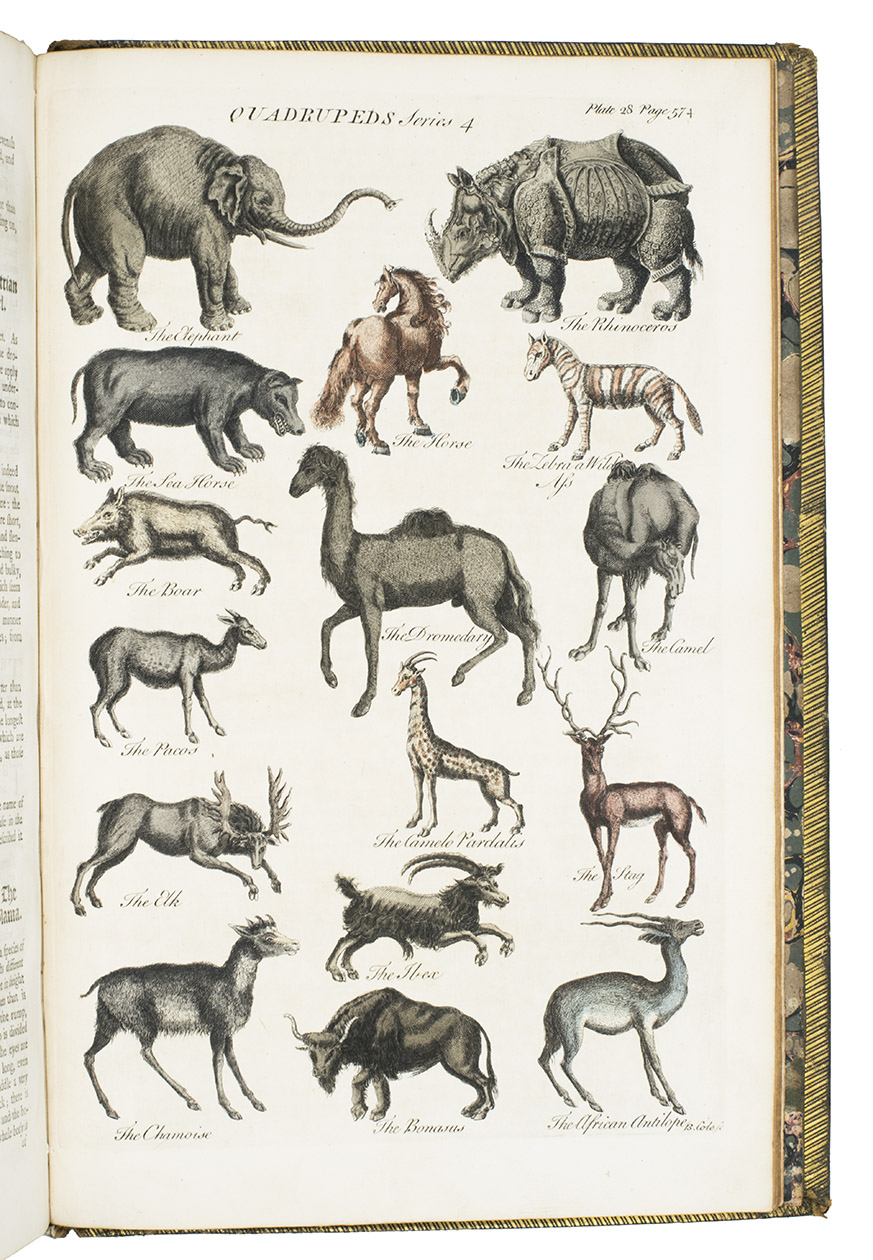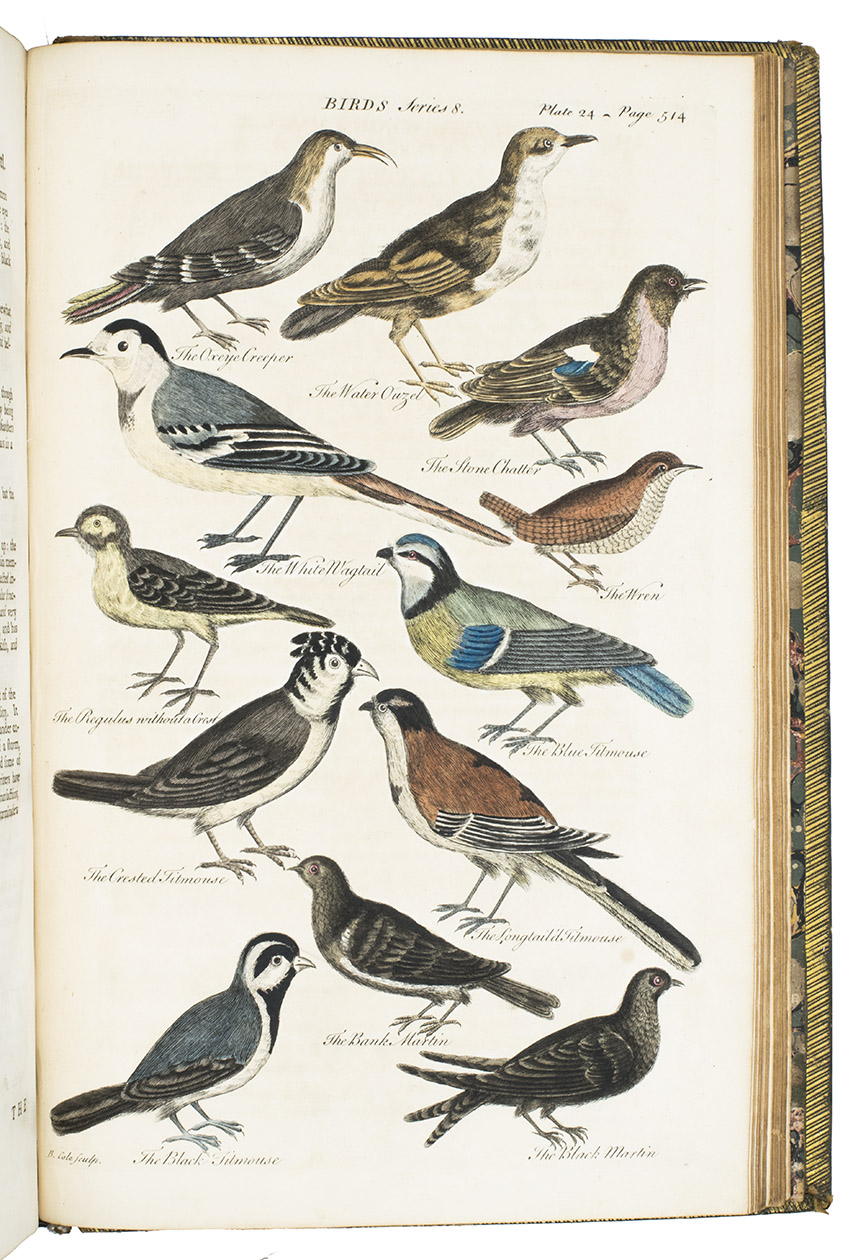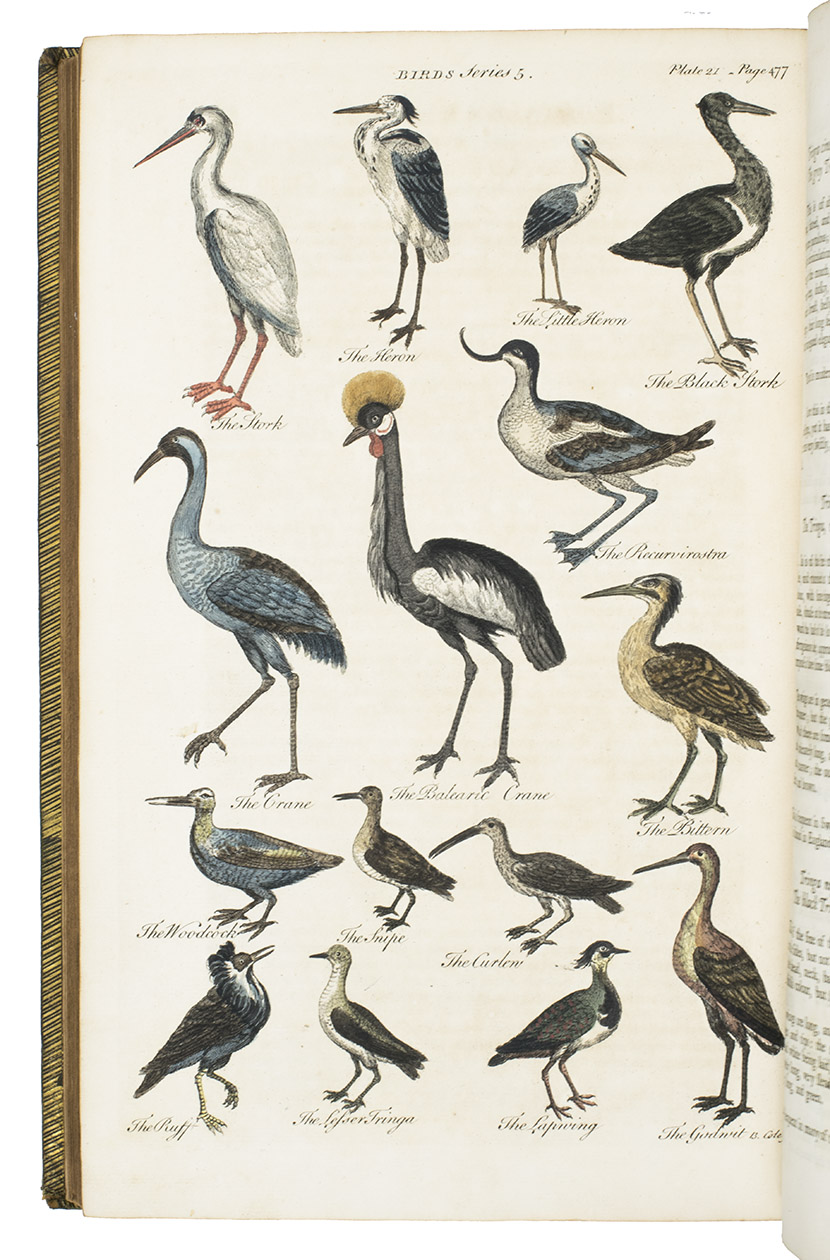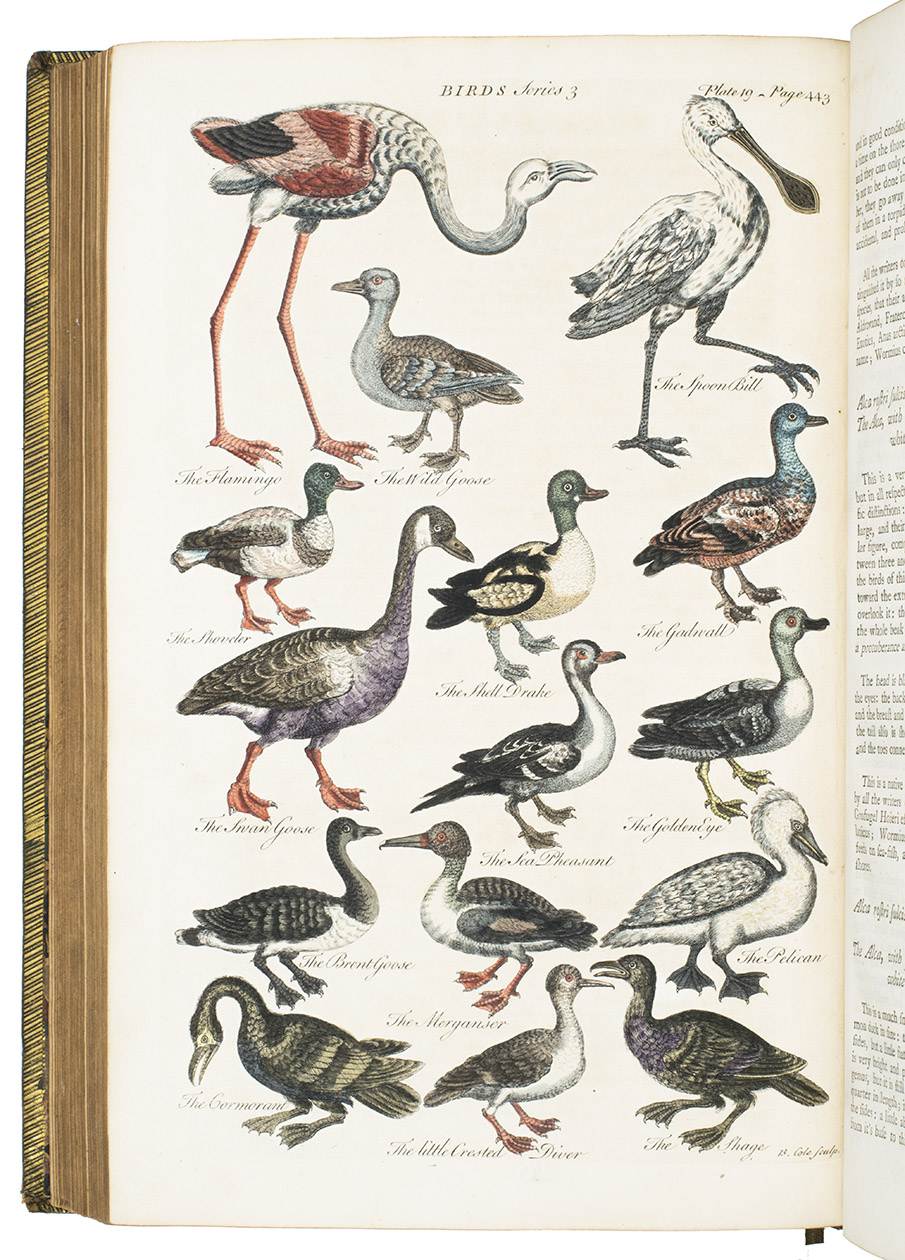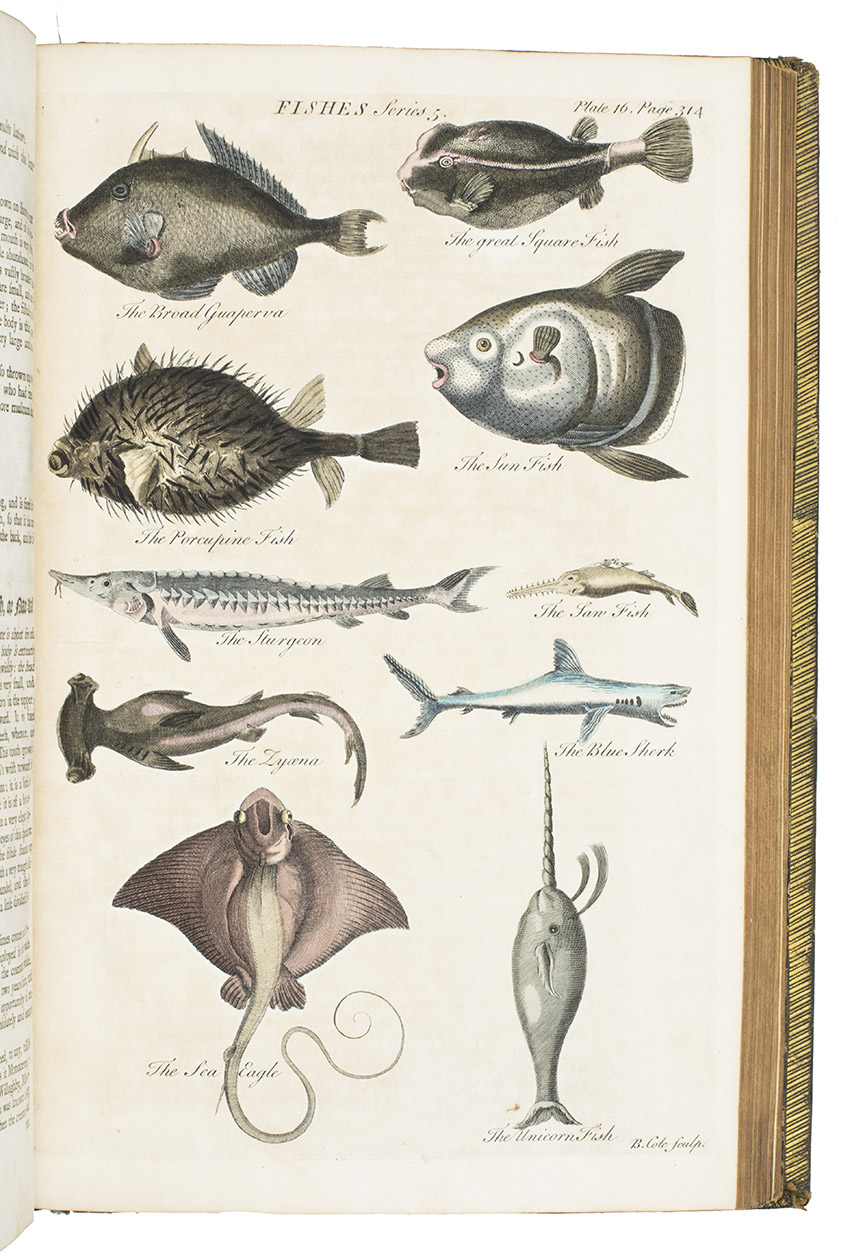HILL, John.
A general natural history: or, new and accurate descriptions of the animals, vegetables, and minerals, of the different parts of the world; with their virtues and uses, as far as hitherto certainly known, in medicine and mechanics: ...
London, Printed for Thomas Osborne, 1748-1752. 3 volumes. Folio. With 56 hand-coloured plates (16 on plants, 28 on animals and 12 on fossils, some signed by B. Cole) and in volume 3 also 1 folding table.Contemporary green morocco, richly gold-tooled spines with red morocco labels, gold-tooled frames on the boards, marbled endpapers. Volumes misnumbered on the spines (vols. 1-3 labeled 3, 1 and 2 respectively). [12], 1-228, 333-592, *457-*592, 593-654, [6]; XXVI, 642; [7], [1 blank]; [8], 584, [4]; pp.
€ 8,500
First edition of a three-volume work on natural history written by the British botanist, apothecary and physician John Hill (1707?-1775), well-known for his voluminous publications on (natural) science. His main interest was botany, but he also covers zoology, medicine and mineralogy. His A general natural history can be regarded as his main work, because each volume was influential on its own. The history of fossils (vol. 1, labeled 3) is Hills first and nearly only publication on mineralogy. He describes the minerals, often based on microscopic examination, and on that basis divides them into series, classes and orders. The folding table at the end of this volume shows a classification system for fossils.
The volume on plants (vol. 2, labeled 1) could be regarded as Hills major publication on botany. In this volume "Hill introduced the classification system of Linnaeus to England" (DSB). He describes several species and sorts of plants, their physical appearance, size, geographic range and rarity. He describes algae, fungi and cacti, but also flowers such as gladiolas, hyacinths and daffodils. He also describes more exceptional trees, such as the coffee tree and the tamarinde tree, and vegetables and herbs, such as parsnip, anise and coriander. Sometimes the English common names of some plants are printed in gothic type.
The volume on animals (vol. 3, labeled 2) describes different classes of the animal kingdom and can be seen as Hill's principal achievement in the field of zoology. It opens with an extensive description of microscopic animals, followed by a description of insects, spiders, beetles and butterflies. He also describes crabs, hermit crabs, starfishes, cuttlefishes, sea horses and different kinds of fishes in general. Also different kinds of amphibians and reptiles. Mammals receive special attention, including squirrels, rabbits, bears, apes, lions, tigers, elephants, camels, goats and antilopes, but also more exceptional animals, such as the manatee and walrus. The bird section is also very extensive, including parrots, owls, falcons, buzzards, ducks and cranes, but also more exotic birds as the toucan and bird of paradise.
The three volumes together contain 56 hand-coloured engraved plates with many images, accompanying the text. The extensive text together with these images make Hills book a very useful reference work on natural history that could be read and used by a common or a scientific public.
With the bookplate (in 2 vols. with traces in the third) of Karin Mellegers. Each volume also contains an owner's inscription of "... Baker" and marginal annotations throughout, especially in the "General table" in vol. 3, probably from the same hand. Bindings slightly worn, corners bumped, head of the spines cracked or worn. First plate of vol. 2 partly loose. Some offsetting from the coloured plates, some occasional foxing. Otherwise in good condition, the hand-coloured plates very good. Anker 210 (vol. 3); Freeman 1672; Johnston 420; Nissen ZBI, 1939; Stafleu & Cowan 2767; for the author: DSB VI, pp. 400-401.
Related Subjects:

